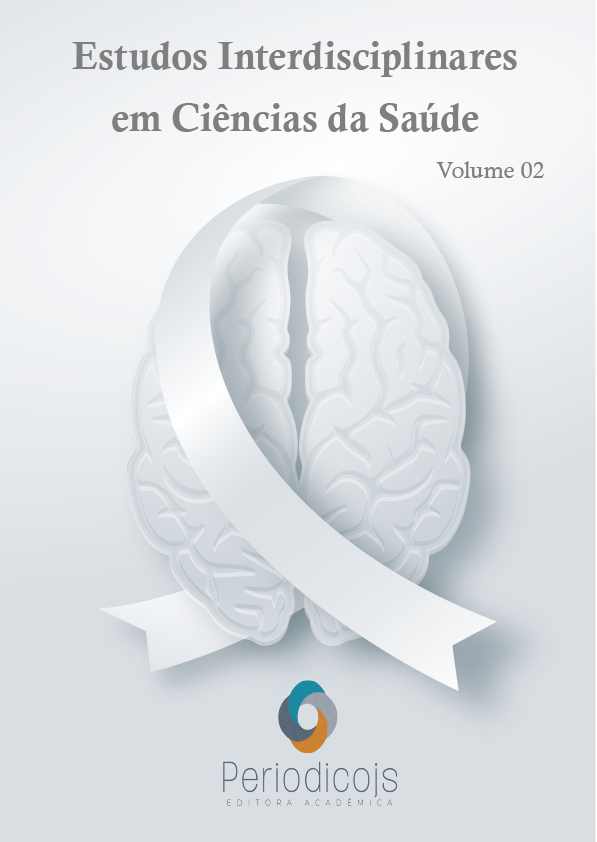Abstract
The aim of this article is to verify the prevalence, signs and symptoms of temporomandibular dysfunctions in law students at a higher education institution in the interior of the state of Pernambuco. A cross-sectional descriptive study was carried out with 251 students who answered Fonseca’s amnestic questionnaire. Analyses were completed regarding the degree of severity, where the results of the Fonseca scale indicated that 59 (23.5%) of the patients had no TMD, 124 (49.4%) had mild TMD, 55 (21.9%) had moderate TMD and 13 (5.2%) had severe TMD. It was observed that females were more affected, as well as a higher prevalence of the pathology in the last periods of graduation.
References
Oliveira SCFS, Queiroz RGQ, Vieira BR, Costa MJF, Penha ES, Filho ALO, Figueiredo CHMC, et al. Prevalência de Hábitos Parafuncionais em Graduandos de Odontologia em uma Universidade Pública Federal. Brazilian Journal of Surgery and Clinical Research - BJSCR: Patos- PB, v. 27, n. 3, p. 18-21, 2019.
Paulino MR, Moreira VG, Lemos GA, Silva PLP, Bonan PRF, Batista AUD. Prevalência de sinais e sintomas de disfunção temporomandibular em estudantes pré-vestibulandos: associação de fatores emocionais, hábitos parafuncionais e impacto na qualidade de vida. Ciência & Saúde coletiva, v. 23, p. 173- 186, 2018.
Augusto VG, Perina KCB, Penha DSG, Santos DCA, Oliveira VAS. Temporomandibular dysfunction, stress and common mental disorder in university students. Acta ortopedica brasileira, v. 24, n. 6, p. 330-333, 2016.
Cruz JHA, Sousa LX, Oliveira BF, Junior FPA, Alves MASG, Filho AAO. Disfunção temporomandibular: revisão sistematizada. Arch Health Invest, Patos, Paraíba, Brasil, v. 6, n. 9, p. 570-575, 23, 2018.
Figueiredo VMG, Cavalcanti AL, Farias ABL, Nascimento SR. Prevalência de sinais, sintomas e fatores associados em portadores de disfunção temporomandibular. Acta Scientiarum. Ciências da Saúde, v. 31, n. 2, p.15963, 2009.
Cavalcanti MOA, Lucena LBS, Batista AUD. Avaliação da Disfunção Temporomandibular (DTM) e dor orofacial associadas a hábitos parafuncionais e fatores psicológicos em acadêmicos da Polícia Militar, 2009.
Natu VP, Yap AU, Su MH, Ali NMI, Ansari A. Temporomandibular disorder symptoms and their association with quality of life, emotional states and sleep quality in South East Asian youths. Journal of oral rehabilitation, v. 45, n. 10, p. 756-763, 2018.
Queiroz MBD, Magalhães KM, Machado J, Viana MO. Prevalência de disfunção temporomandibular e associação com hábitos parafuncionais em alunos do curso de Fisioterapia da Universidade de Fortaleza. Revista rede de cuidados em saúde, v. 9, n. 1, 2015.
Pastore GP, Goulart DR, Pastore PR, Prati AJ, Moraes M. Comparison of instruments used to select and classify patients with temporomandibular disorder. Comparison Of Instruments Used In Tmd, Brasília, Distrito Federal, v. 31, n. 1, p. 16-22, 2018
Mendes LMR, Barreto MCA, Castro SS. MENDESInstrumentos que avaliam a funcionalidade em indivíduos com disfunção temporomandibular e a Classificação Internacional de Funcionalidade: revisão sistemática. Web Of Science, Fortaleza, Brasil. v. 1, n. 4, p. 63-67, 2020.
Campos JADB, Gonçalves DAG, Camparis CM, Speciali JG. Confiabilidade de um formulário para diagnóstico da severidade da disfunção temporomandibular. Revista Brasileira de Fisioterapia, São Carlos, v.13, n.1, p. 38-43. 2008.
Fonseca DM, Bonfante G, Valle AL, Freitas SFT. Diagnóstico pela anamnese da disfunção craniomandibular. Rev Gaucha Odontologia, São Paulo, v. 42, n. 1, p. 23-8, 1994
Urbani G, Jesus LF, Silva ENC. Síndrome da disfunção da articulação temporomandibular e o estresse presente no trabalho policial: revisão integrativa. Ciência & Saúde Coletiva, Rio de Janeiro, v. 24, n. 5, p. 1753-1765, 2017.
Guerra C, Pinho IBS, Oliveira LTGC, Nicésio PHA, Rocha PBVF, Gomes JSAR, et al. Prevalência de sinais e sintomas da disfunção temporomandibular e sua relação com fatores psicológicos em acadêmicos de medicina de Barbacena. Revista Interdisciplinar de Estudos Experimentais, v. 10, p. 0160, 2018.
Ferreira CLP, Silva MAMR, Felício, CM. Sinais e sintomas de desordem temporomandibular em mulheres e homens. Laboratório de Investigação do Sistema Estomatognático, Ribeirão Preto, v. 1, n. 28, p. 17-21, 2016.
Silva, CVD. Impacto da cefaleia, severidade da DTM e limitação da função mandibular em mulheres com DTM crônica, 2019.
Sanchez MO, Souza FCA, Nascimento EF, Souza MFA, Nery ES, Alvarenga AVM. Hábito parafuncional e disfunção temporomandibular, uma questão de gênero? Revista Salusvita, Bauru, v. 36, n. 3, p. 667-675, 2017.
Silva MAG, Pantoja LLQ, Horstmann KLD, Neto JV, Wolff FL, Porporatti AL, et al. Prevalence of degenerative disease in temporomandibular disorderpatients with disc displacement: A systematic review and meta-analysis Journal of Cranio-Maxillo-Facial Surgery, Goiânia, v. 48, n. 1, p. 942-955, 2020.
Costa ARO, Oliveira ES, Oliveira DWD, Tavano KTA, Murta AMG, Gonçalves PF, et al. Prevalência e fatores associados ao bruxismo em universitários: um estudo transversal piloto. Revista Brasileira de Odontologia, v. 74, n. 2, p. 120, 2017.

